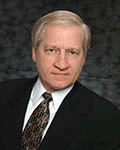by Gene Dixon, PhD, MBA, FASEM, CPEM
Chair, ASEM Fellows
Associate Executive Director, ASEM
This is a little different spin on practicing engineering management. This is directed towards those EM’ers working on advanced degrees and are seeking permissions to use IP that others have created. Maybe there are other applications for those with imagination.
I remember the trepidation I had in reaching out to noted authors about using their materials. Nobody ever told me how. The pundits said just ask. Ask how? Phone call? Email? Snail mail? I didn’t know. I did email them. And, it was really gratifying when I heard positive responses from noted authors like Ira Chaleff, James Burns, and Kouzes and Posner.
Still how do you pose the question, “Can I use your chart, survey, or cite your work?”
I want to make 2 points.
Last week I received a request that schooled me on how to ask that question. The teacher learned from the student.
There was a conference on followership the summer of 2019. I was unable to attend; however I’ve had a great number of requests since that conference for permission to use The Followership Profile developed as part of my dissertation.
The request was simple and direct. It got right to the point by making the request in its opening line. The requestor then went on with a brief statement of purpose.
The next sentences were the sentences that I wish I had known to use when I was asking permissions. The requestor quoted (and cited) some of my previous work. It was a brief one or two sentences from a co-authored piece.
This quote was a clear statement that the requestor had done their homework and gave the impression that they knew what they were going, and wanted, to do. I may be easy to impress, and this was certainly impressive and appealing to me. A simple gesture that said to me that the requestor was prepared and valued work I had done and that they wanted to use.
Point 1: Demonstrate your preparation and why you want the IP owner’s permission.
There was another request from an international researcher. The grammar was not consistent with US norms, but the request properly addressed the researcher’s purpose. Once permission was granted, the acknowledgement and appreciation were endearing. I have never received such a warm thank you from anyone who used, or uses, proper grammar. As Dale Carnegie said, “Be hearty in your approbation, lavish in your praise.” We’ve corresponded a couple of times since then and I have a standing invitation to visit them in the future.
Point 2: Give heartfelt thanks for permission when you receive it.
There you have it. If you are a researcher requesting permissions, make a pitch that is appealing and give thanks. Maybe with some imagination, even the most experienced EM practitioner can find other ways to apply these two points.
And, let’s all go find a new ASEM member.
About the Author
 Gene Dixon is the Associate Executive Director of the American Society for Engineering Management (ASEM) and is a retired university Professor having taught aspiring engineers at the undergraduate level for 14 years. He is a Certified Professional Engineering Manager and has held positions with Union Carbide, Chicago Bridge & Iron, E.I. DuPont & deNemours, Westinghouse Electric, CBS, Viacom, and the Washington Group over a span of 28 years. His work experience includes project engineer, program assessor, senior shift manager, TQM coach, production outage planner, and a remediation engineer. He is a fellow of the ASEM and served as secretary, president-elect and was the 2015 ASEM President. He was awarded the Bernie Sarchet Award by the ASEE EM Division and the Frank Woodbury Service Award by the ASEM. He has served a board member of ASEE’s Design in Engineering Education Division, the Engineering Management Division, and the Engineering Economy Division and the editorial board of Thee Engineering Economists. He has served as a board member for the Institute for Industrial and Systems Engineering’s (IISE) Engineering Economy Division and the IISE’s Society for Engineering Management Systems Division.
Gene Dixon is the Associate Executive Director of the American Society for Engineering Management (ASEM) and is a retired university Professor having taught aspiring engineers at the undergraduate level for 14 years. He is a Certified Professional Engineering Manager and has held positions with Union Carbide, Chicago Bridge & Iron, E.I. DuPont & deNemours, Westinghouse Electric, CBS, Viacom, and the Washington Group over a span of 28 years. His work experience includes project engineer, program assessor, senior shift manager, TQM coach, production outage planner, and a remediation engineer. He is a fellow of the ASEM and served as secretary, president-elect and was the 2015 ASEM President. He was awarded the Bernie Sarchet Award by the ASEE EM Division and the Frank Woodbury Service Award by the ASEM. He has served a board member of ASEE’s Design in Engineering Education Division, the Engineering Management Division, and the Engineering Economy Division and the editorial board of Thee Engineering Economists. He has served as a board member for the Institute for Industrial and Systems Engineering’s (IISE) Engineering Economy Division and the IISE’s Society for Engineering Management Systems Division.
